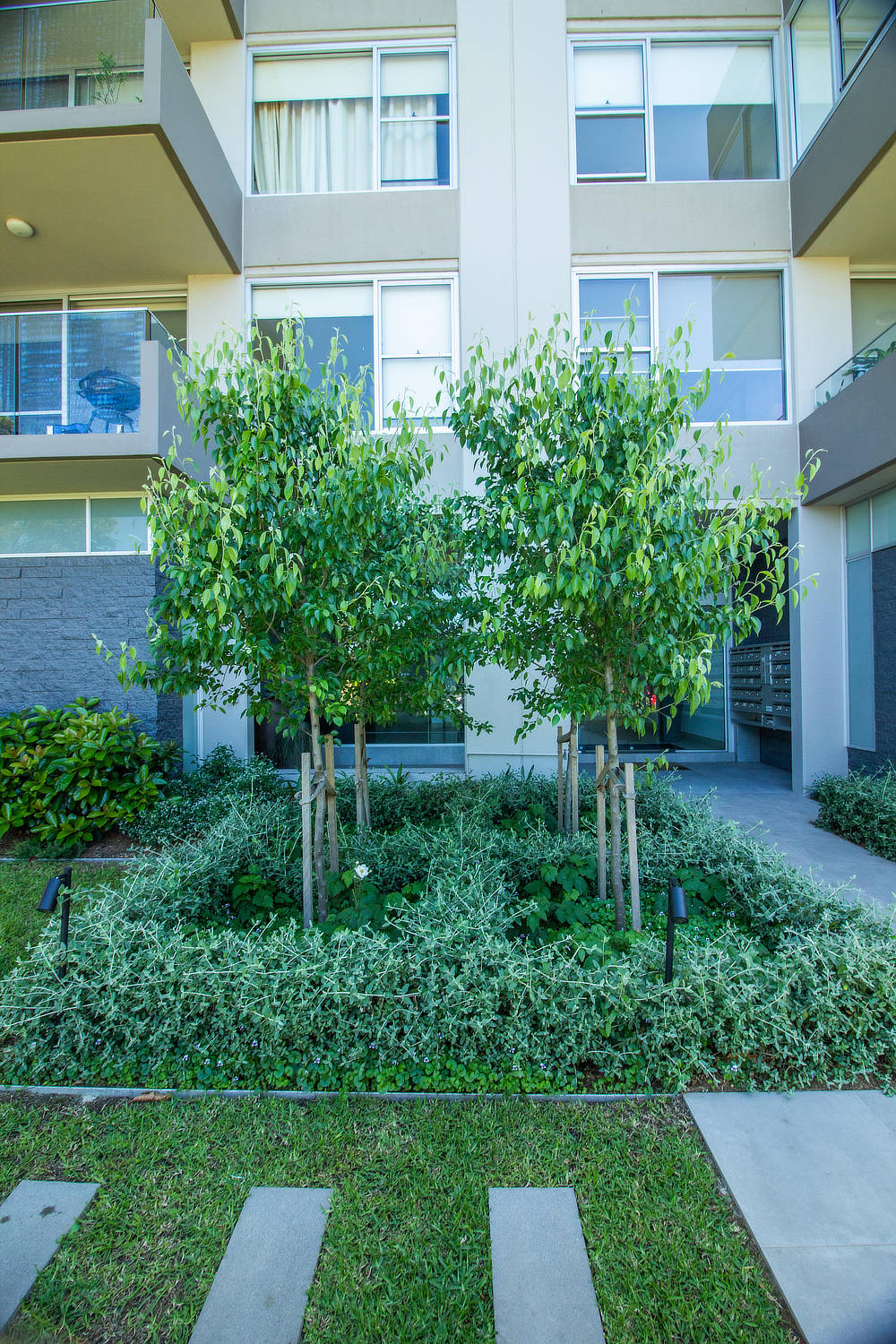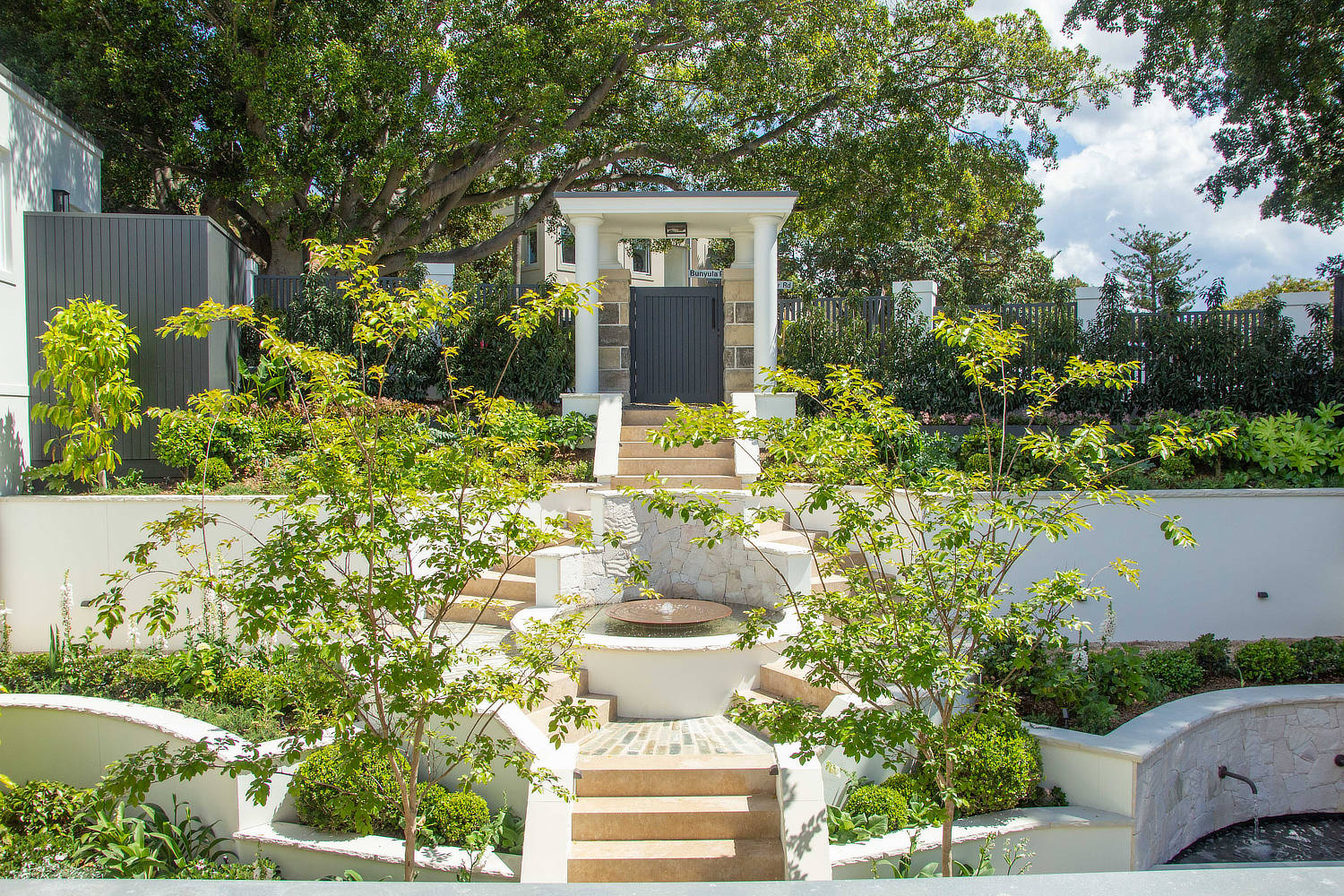There was a time, very early in my landscape career, when I found formal gardens stale and boring, but this was simply due to the fact I hadn’t spent anytime appreciating them! Now I have to admit I am a formal garden tragic. A formal garden is one that combines structure, architecture, planting and a simple yet refined layout that culminates in a stylish space that is timeless.
Maintaining strong axis through a garden is a great way to make a layout feel formal, simple yet directional so you can decide where you want people to go or look. Start with a main axis point and then work cross directional lines off this. These extra design lines will help you to create pockets of interest in a garden where sculpture, pots or feature plants can be displayed. Not many of us have a perfectly square or rectangular garden so the odd angles are great spaces to create these break out areas.
My initial dislike to formal gardens (20 years ago) came from the fact I felt they only had one view to look at and this quickly became disinteresting to me so to ensure a garden feels like it’s not showing you all its got in one view, mask these cross axis with taller plants and have layers to the finishes so as you walk through the space it feels like it is evolving and taking you on a journey. An example of this could be a solid stone path as the central line and the cross-axis pathways be a simple complementary gravel. By doing this you’ll get a hierarchy of finishes and an experience throughout the space rather than just an initial impact.
My favourite part of a formal garden would have to be the structure that is brought into a space. This structure is the same thing that can make a formal garden somewhat predictable to some, so I like to use certain elements of looser styles of garden planting to really get the best of both worlds. This juxtaposition of planting styles is a very English way to garden.
Combining a clipped low hedge as a garden boarder with a more informal planting style such as roses, iris, grasses and other cottage style plants will provide year-round interest and soften the harder elements found in a formal space. The simplicity of the low hedging will provide a picture frame for the more flamboyant planting held behind it.
Restraint not repetition is a key to a good formal design – People think by repeating and mirroring your garden it will be a successful formal design, but this can lead to a predictable space. The formal lines will give you the strong feel and you may want to mirror key structural plants, such as topiary balls flanking a pathway but allow the rest of the planting to bring as much interest as possible. Restraint in your material palette or colour palette will provide a sense of style and sophistication so stick to a few key finishes and apply the best quality you can to these.
Caring for a formal garden can be high maintenance as the hedging plants often need clipping and flowers dead heading so ensure you do as much soil preparation as possible to make those plants healthy and strong. If you want to reduce the maintenance of a formal garden limit the space dedicated to this style of garden and perhaps only apply it to a few key areas of your space.
Formal gardens are often big drinkers, requiring regular rainfall or irrigation to succeed so select hardy alternatives such as rosemary or westringia for the hedging and natives like emu bush, Dietes and wildflower mixes to give the flamboyance and flower.


